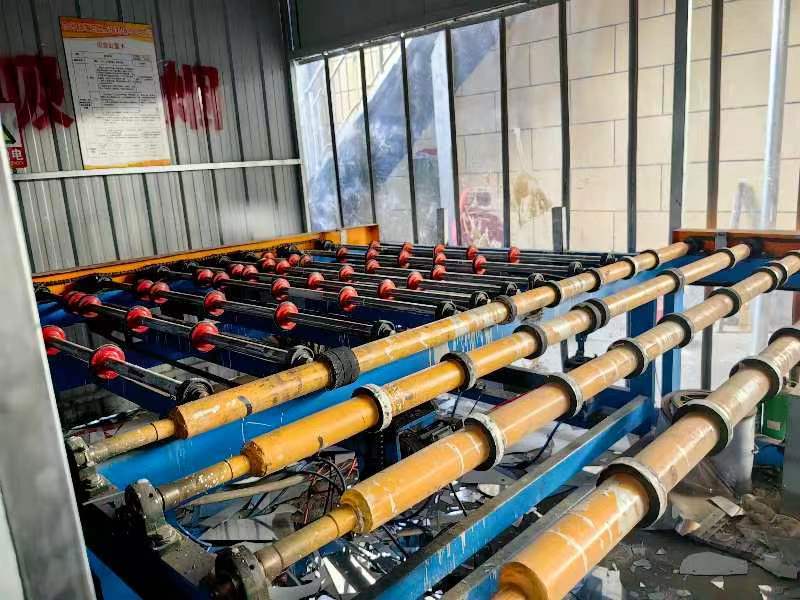Maximizing Aesthetic and Functional Benefits with Aluminum Mirror Lines in Architectural Design
Time:
2025-08-25 11:20
Aluminum mirror lines are gaining significant traction in the architectural domain due to their unique blend of aesthetics and functionality. As professionals in the construction and decoration materials industry, understanding the nuances of aluminum mirror lines can greatly enhance your design strategies and project outcomes.
One of the primary advantages of aluminum mirror lines is their lightweight nature. In contrast to traditional glass mirrors, aluminum-based mirrors are much lighter, which simplifies transportation and installation processes. This is especially beneficial in large-scale architectural projects where weight considerations can impact structural integrity and design feasibility.
Another compelling aspect is the versatility of aluminum mirror lines. They can be easily shaped and customized to fit a wide variety of design specifications. Whether used in ceilings, walls, or decorative panels, these mirror lines can adapt to different architectural styles, from modern to classic. Their reflective properties can also enhance natural light within a space, creating an illusion of openness and brightness, which is critical in contemporary design practices.
Furthermore, aluminum mirror lines boast exceptional durability and resistance to corrosion. Unlike traditional mirrors, which can deteriorate over time due to environmental factors, aluminum mirrors maintain their quality even in humid or harsh conditions. This durability ensures long-lasting beauty and functionality, making them an ideal choice for both indoor and outdoor applications.
In terms of maintenance, aluminum mirror lines require minimal upkeep. Regular cleaning with non-abrasive materials is typically sufficient to keep them looking pristine. This low maintenance requirement is an attractive selling point for clients who seek both aesthetic appeal and practical ease.
From a sustainability perspective, aluminum is a recyclable material, making aluminum mirror lines an environmentally friendly choice for modern architectural projects. By opting for aluminum solutions, architects and builders can contribute to sustainable building practices, which are increasingly demanded by clients and regulatory bodies alike.
In conclusion, the incorporation of aluminum mirror lines in your projects can significantly enhance both aesthetic and functional elements. Their lightweight nature, versatility, durability, and low maintenance make them an excellent choice for various applications in the building and decoration materials industry. As the demand for innovative and sustainable design solutions grows, aluminum mirror lines are poised to play a pivotal role in shaping the future of architectural design. By staying informed about these advancements, you can ensure that your projects remain at the forefront of industry trends and client expectations.
One of the primary advantages of aluminum mirror lines is their lightweight nature. In contrast to traditional glass mirrors, aluminum-based mirrors are much lighter, which simplifies transportation and installation processes. This is especially beneficial in large-scale architectural projects where weight considerations can impact structural integrity and design feasibility.
Another compelling aspect is the versatility of aluminum mirror lines. They can be easily shaped and customized to fit a wide variety of design specifications. Whether used in ceilings, walls, or decorative panels, these mirror lines can adapt to different architectural styles, from modern to classic. Their reflective properties can also enhance natural light within a space, creating an illusion of openness and brightness, which is critical in contemporary design practices.
Furthermore, aluminum mirror lines boast exceptional durability and resistance to corrosion. Unlike traditional mirrors, which can deteriorate over time due to environmental factors, aluminum mirrors maintain their quality even in humid or harsh conditions. This durability ensures long-lasting beauty and functionality, making them an ideal choice for both indoor and outdoor applications.
In terms of maintenance, aluminum mirror lines require minimal upkeep. Regular cleaning with non-abrasive materials is typically sufficient to keep them looking pristine. This low maintenance requirement is an attractive selling point for clients who seek both aesthetic appeal and practical ease.
From a sustainability perspective, aluminum is a recyclable material, making aluminum mirror lines an environmentally friendly choice for modern architectural projects. By opting for aluminum solutions, architects and builders can contribute to sustainable building practices, which are increasingly demanded by clients and regulatory bodies alike.
In conclusion, the incorporation of aluminum mirror lines in your projects can significantly enhance both aesthetic and functional elements. Their lightweight nature, versatility, durability, and low maintenance make them an excellent choice for various applications in the building and decoration materials industry. As the demand for innovative and sustainable design solutions grows, aluminum mirror lines are poised to play a pivotal role in shaping the future of architectural design. By staying informed about these advancements, you can ensure that your projects remain at the forefront of industry trends and client expectations.
aluminum mirror line
News







